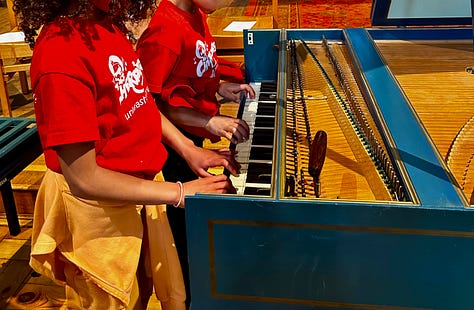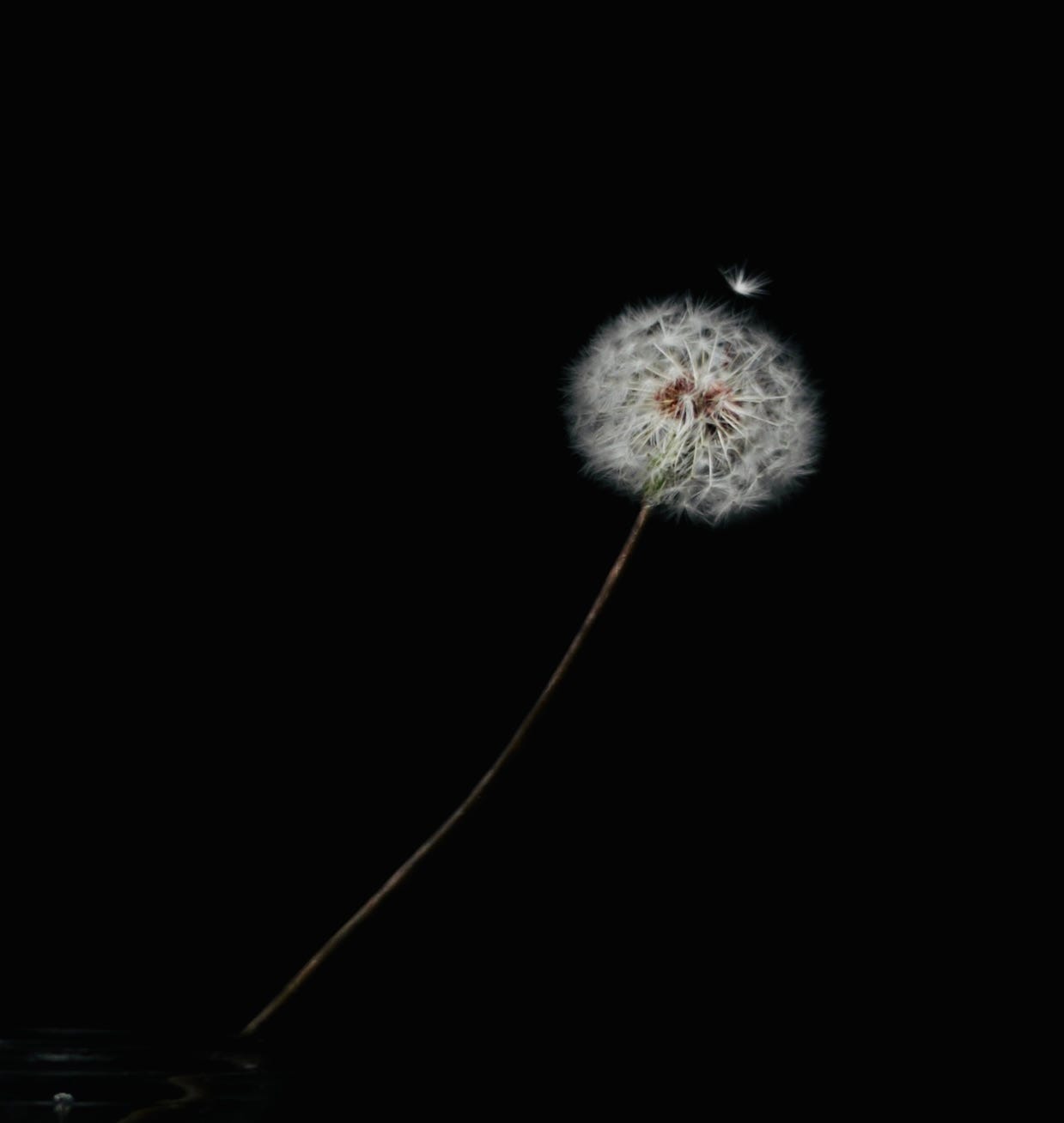I am listening to …
Father & Son, an album with tenors Christoph and Julian Prégardien, singing Schubert, Brahms and more. It is a labour of love and you can hear it. Some songs work better than others but the artists’ enjoyment will carry the listener with them. Imagine an intimate musical gathering, take a seat on the sofa and just enjoy some beautiful singing amongst friends and family, with these two going through their favourite songs, all accompanied by Michael Gees.
I am reading …
Enchantment: Awakening Wonder in an Anxious Age by Katherine May. This title definitely grabbed my attention.
May asks us to “sense magic in the everyday, to channel it through our minds and bodies, to be sustained by it.” She explores the importance of enchantment in our lives and how to cultivate it in this exhausted world. May argues that we are losing our sense of wonder, which leads to feelings of disconnect, discontent and anxiety.
May believes that Enchantment comes from a deep engagement with the world, “the particular quality of experience that accompanies close attention, the sense of contact that emerges from noticing.”
Our sense of enchantment is not triggered only by grand things; the sublime is not hiding in distant landscapes. The awe-inspiring, the numinous, is all around us, all the time. It is transformed by our deliberate attention. It becomes valuable when we value it. It becomes meaningful when we invest it with meaning. The magic is of our own conjuring.
It is this child-like attention to ‘awesome’ details around us that we should try to recapture and recultivate.
May reflects on the ‘art’ of negative capability, a term first coined by John Keats, which describes an artist’s access to truth without the pressure and framework of logic or science. Contemplating his own craft and the art of others in a letter to his brothers, Keats observes that
“at once it struck me, what quality went to form a Man of Achievement especially in Literature & which Shakespeare possessed so enormously—I mean Negative Capability, that is when man is capable of being in uncertainties, mysteries, doubts, without any irritable reaching after fact & reason”1
I think we should definitely make time in our lives to embrace the mystery and beauty of the world, to just being ‘in awe’, without feeling the need to explain or categorize it. These are the moments that allow for the imagination to take off, and creative thinking to take hold. By being comfortable with the unknown and the inexplicable, we can surely expand our perspectives.
The most beautiful experience we can have is the mysterious. It is the fundamental emotion which stands at the cradle of true art and science.
Albert Einstein2
I am looking at …
the dandelion and remember how fascinated I was by these little parachutes when I was small. Just lying on my stomach in the grass and trying to get as close as possible to this fragile mystery, holding my breath and pondering where these tiny umbrellas might fly off to ..
I am thinking about …
the fact that in 2021, the spending on arts education in the U.K. came to an average of just £9.40 per pupil for the year.
The arts always have a problem with hard data, so it is often difficult to justify spending. “Arts is this visceral thing, this thing inside you, the collective moment of a crescendo,” said Heddy Lahmann, an assistant professor of international education at New York University, who is conducting a global study examining arts education in public schools for the Community Arts Network. “But it’s really hard to qualify what that is.”
But as funding for arts education declines worldwide, what are we losing in the process? Is it not through the arts that we make largely sense of the world, past, present and future? From cave paintings to an AI masterpiece, they help us understand our own history, they challenge us to take action, or look afresh at a scientific mystery; they entertain and make us uncomfortable enough to look again at the state of the world, or our own microcosmos.
Two totally random examples that caught my attention recently:
El Cimmarón3 by Henze aims to increase our social and political awareness as much as it wants to stretch our musical vision. (I heard a fantastic performance at the Wigmore with baritone Will Liverman, guitarist Sean Shibe, flautist Adam Walker and percussionist Owen Gunnell. The percussion set up on stage was already mind-bending4 ).
I read a moving account by author Christine Koh about watching the musical Hamilton in Boston and her reaction when seeing herself reflected on stage - a Korean actor, Marcus Choi, had the lead role (George Washington). .. “there are many ways to create change and shift that spotlight around for collective benefit.” The arts are one of the best ways to do just that.
Confronted and inundated with a constant stream of information (true, false, bent) to make sense of, it is so important for students to learn to think critically and creatively. We need an enormous amount of imaginative capacity that schools are still barley equipped to teach, and this is where the arts come in. They open eyes and ears!
and I like …
this recent visitor to a Baroque recital in London. The whole concert was a joyous gathering of friends, connoisseurs, supporters, kids and dogs. It was not always quiet, but no one minded (much). There were audible dips in the friendly buzz, when even the dog put down his stick to listen more intently to some exceptional music. (More about the ensemble Zarek another time, I promise.)



Thanks so much for reading, see you in June
Kirsten
PS There is a lot of reading, listening, research and travel involved in my line of work; I stumble across many interesting things and ideas I can't just leave behind so I decided to write about them and share with you.
Letter to George and Tom Keats, Hampstead Sunday 22 December 1818
Subtitled ‘Biography of the runaway slave Esteban Montejo, (libretto by Hans Magnus Enzensberger), and based on the oral autobiography by Montejo, who was also a veteran of the Cuban War of Independence.
Bariton - Flötist (Picc. · Fl. · Altfl. · Bassfl. · Ryuteki [oder Picc.] · Mundharm. [Harmonetta] · Trillerpf. · Maultrommel) - Gitarrist - Schlagzeuger (3 Fingerzimb. · Vibr. · Marimba · 3 Herdengl. · 3 hg. Beck. · 2 Tamt. · 13 Tomt. [chrom.] · 3 Bong. · kl. Tr. · 8 Boo-bams · 4 Log Drums · Cong. [Tumba] · Trinidad Steel Drum · gr. Tr. [mit Ped.] · Mar. · Guiro · Kette auf Holz · Kette auf Metallplatte · 3 Dobaçi · Clav. · Matraca · hg. Bambusstäbe · hg. Glasstäbe [Glasspiel] · Shell Chimes · Vogellockrufe · Marimbula · 2 Donnerbleche)




